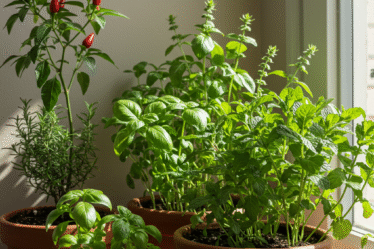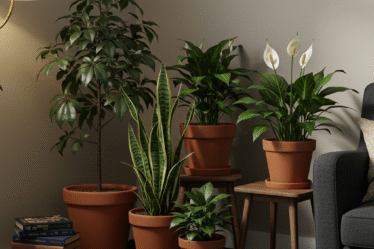
Bottoms Up! For many houseplant enthusiasts, the phrase conjures images of a celebratory toast, perhaps after successfully propagating a finicky fiddle-leaf fig. But in the world of indoor gardening, “bottoms up” takes on a whole new meaning – the art of bottom watering. This technique offers a gentle, effective way to hydrate your leafy companions, promoting robust growth and preventing common watering woes. In this article, we’ll delve into the science behind bottom watering, explore its numerous benefits, and provide a step-by-step guide to help you master this essential skill.
Traditional top-down watering, while convenient, can sometimes lead to uneven moisture distribution. Water often rushes through the potting mix, leaving the roots at the bottom parched while the top layer stays soggy. This can create a breeding ground for fungal diseases and root rot. Bottom watering, on the other hand, encourages the roots to actively seek out moisture, drawing water upwards through capillary action. This ensures deep, thorough hydration and promotes a stronger, healthier root system. Think of it as offering your plants a refreshing drink, rather than a quick shower.
The benefits of bottom watering extend beyond just even hydration. It also helps prevent overwatering, a common culprit behind struggling houseplants. By allowing the plant to absorb only the water it needs, you minimize the risk of waterlogged soil and the subsequent suffocation of roots. This is particularly beneficial for plants sensitive to overwatering, such as succulents and African violets. Furthermore, bottom watering reduces the risk of foliar diseases, as the leaves remain dry, minimizing the spread of fungal spores. It’s also an excellent method for flushing out excess salts and fertilizers that can accumulate in the soil over time, preventing nutrient burn and promoting optimal plant health.
So, how do you actually bottom water? It’s remarkably simple. First, find a container slightly larger than your plant pot, such as a basin or a deep saucer. Fill it with a few inches of room-temperature water. Avoid using cold water, as this can shock the plant’s roots. Next, place your plant pot in the water-filled container, ensuring the water level doesn’t reach the top rim of the pot. The water should reach about two-thirds up the side of the pot. Now, patience is key. Allow the plant to sit in the water for anywhere between 30 minutes to an hour, or until the topsoil feels moist to the touch. You’ll notice the potting mix darkening as it absorbs the water. Once sufficiently hydrated, remove the pot from the water and allow it to drain completely before placing it back in its usual spot. Avoid leaving the plant sitting in water for extended periods, as this can lead to root rot. The frequency of bottom watering will depend on factors such as the plant species, pot size, and environmental conditions. Observe your plants closely – they’ll tell you when they’re thirsty.
Mastering bottom watering is a game-changer for any houseplant enthusiast. By understanding the science behind this technique and following these simple steps, you can ensure your plants receive the optimal hydration they need to thrive. So, ditch the watering can, embrace the “bottoms up” approach, and watch your indoor jungle flourish.



